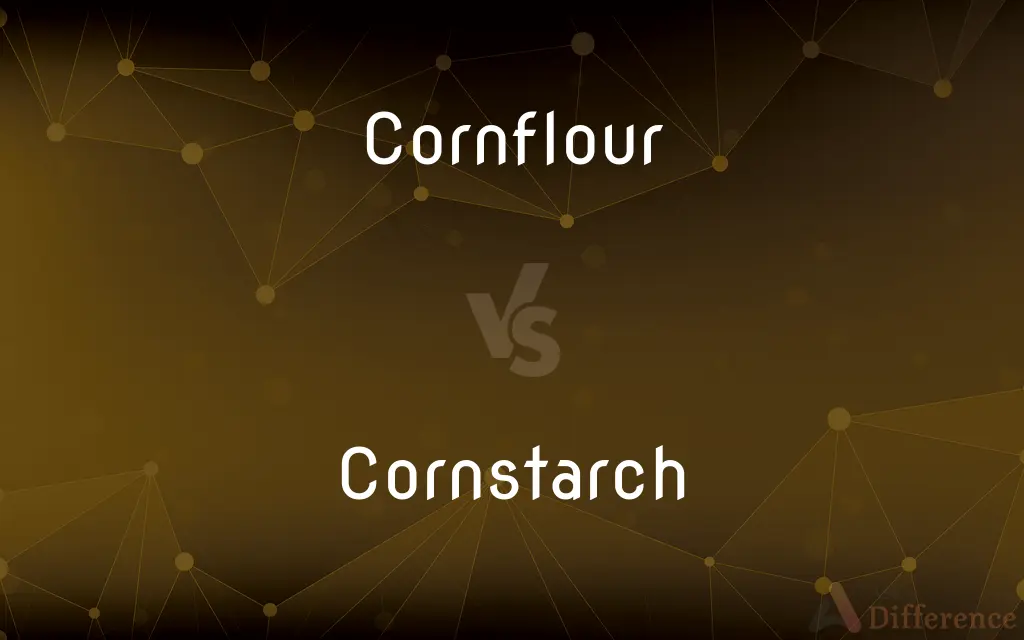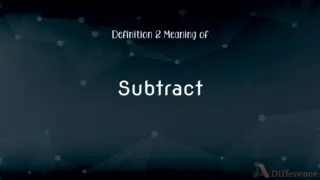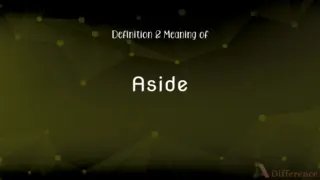Cornflour vs. Cornstarch — What's the Difference?
By Tayyaba Rehman — Updated on September 21, 2023
Cornflour is finely ground cornmeal, often used in baking, while Cornstarch is a pure starch extracted from corn, used as a thickening agent.

Difference Between Cornflour and Cornstarch
Table of Contents
ADVERTISEMENT
Key Differences
Cornflour and Cornstarch, while originating from the same grain, have distinct characteristics and purposes. Cornflour refers to a finely milled powder obtained from the whole kernel of corn. It's often used in cooking and baking for its slightly nutty flavor and is a common ingredient in many recipes. Cornstarch, in contrast, is derived from the endosperm of the corn kernel and is devoid of taste and color.
While Cornflour encompasses the entire corn kernel, Cornstarch represents a more refined product, focusing solely on the starch content of the corn. This distinction leads to varied uses in culinary arts. Cornflour, rich in flavor and texture, finds its way into bread, pancakes, and other baked goods. Cornstarch, however, is primarily used as a thickening agent in gravies, sauces, and soups due to its ability to coagulate when heated.
The consistency of these products is another differentiator. Cornflour often has a texture akin to other flours, making it suitable for recipes that require graininess. Cornstarch's silky, fine texture enables it to dissolve easily, making it perfect for achieving smooth, lump-free mixtures.
The naming conventions can sometimes lead to confusion. In the United States, "cornstarch" is the standard term for the pure starch derived from corn. Meanwhile, "cornflour" typically means a finely ground powder from the whole corn kernel. However, in many other countries, particularly in the UK, "cornflour" can also refer to what Americans know as "cornstarch."
Comparison Chart
Origin
Whole corn kernel.
Endosperm of the corn kernel.
ADVERTISEMENT
Texture
Similar to flour, grainy.
Fine, silky.
Primary Use
Baking, cooking.
Thickening agent.
Flavor
Nutty, corn-like.
Neutral, no distinct flavor.
Composition
Whole grain.
Pure starch.
Compare with Definitions
Cornflour
Ground maize product used in culinary preparations.
Add cornflour to thicken the soup while maintaining its corn essence.
Cornstarch
Derived from the endosperm of the corn kernel.
Cornstarch is a key ingredient in many Asian dishes to achieve the desired sauce texture.
Cornflour
A finely ground powder from whole corn kernels.
The recipe calls for cornflour to add a rich, corn flavor to the bread.
Cornstarch
A pure starch extracted from corn used for thickening.
To prevent the sauce from being runny, add a tablespoon of cornstarch.
Cornflour
Ground cornmeal used in baking and cooking.
I use cornflour to make my special cornbread muffins.
Cornstarch
A culinary ingredient that thickens when heated.
By mixing cornstarch with water, you create a slurry to thicken your gravy.
Cornflour
A flour variant derived from corn grain.
Cornflour gives a delightful texture to the pancakes.
Cornstarch
A flavorless powder acting as a binding and thickening agent.
For a smooth pie filling, mix in some cornstarch.
Cornflour
Milled powder from corn, used in various dishes.
Incorporating cornflour into the batter ensures a crispy crust.
Cornstarch
A white, powdery substance used in cooking.
Cornstarch puddings are smooth and have a delightful consistency.
Cornflour
Finely ground maize flour, used for thickening sauces.
Cornstarch
Finely ground maize flour, used as a thickener in cooking; cornflour.
Cornflour
(British) A very fine starch powder derived from maize (US corn) used in cooking as a thickener, to keep things from sticking, or as an anti-caking agent.
Cornstarch
Starch prepared from corn grains, used industrially and as a thickener in cooking.
Cornflour
A flour or starch prepared from the grains of corn; it is used in cooking as a thickener.
Cornstarch
A very fine starch powder derived from corn (maize) used in cooking as a thickener, to keep things from sticking, or as an anti-caking agent.
Cornflour
Starch prepared from the grains of corn; used in cooking as a thickener
Cornstarch
Starch made from Indian corn, esp. a fine white flour used for puddings, etc.
Cornstarch
Starch prepared from the grains of corn; used in cooking as a thickener
Common Curiosities
Is Cornflour the same as Cornstarch?
No, Cornflour is ground from the whole corn kernel, while Cornstarch is the pure starch extracted from corn.
Can I substitute Cornflour for Cornstarch?
Not directly. They serve different purposes, with Cornstarch being a more effective thickening agent.
Is Cornstarch gluten-free?
Yes, pure Cornstarch is gluten-free.
Does Cornflour have a distinct flavor?
Yes, Cornflour imparts a nutty, corn-like flavor to dishes.
Why is Cornstarch used in baking?
Cornstarch can give baked goods a lighter texture and is often combined with other flours.
How is Cornflour made?
It's made by milling dried corn kernels into a fine powder.
Can Cornflour be used to thicken sauces like Cornstarch?
While it can thicken to some extent, Cornstarch is more efficient due to its higher starch content.
Why does Cornstarch form lumps in hot liquid?
It rapidly gelatinizes, forming a protective barrier. It's best to mix with cold liquid first.
Are there any health concerns with consuming Cornstarch?
In moderation and as part of a balanced diet, it's generally safe. However, it's calorie-dense with little nutritional value.
Share Your Discovery

Previous Comparison
Griffon vs. Griffin
Next Comparison
Neither vs. NorAuthor Spotlight
Written by
Tayyaba RehmanTayyaba Rehman is a distinguished writer, currently serving as a primary contributor to askdifference.com. As a researcher in semantics and etymology, Tayyaba's passion for the complexity of languages and their distinctions has found a perfect home on the platform. Tayyaba delves into the intricacies of language, distinguishing between commonly confused words and phrases, thereby providing clarity for readers worldwide.
















































